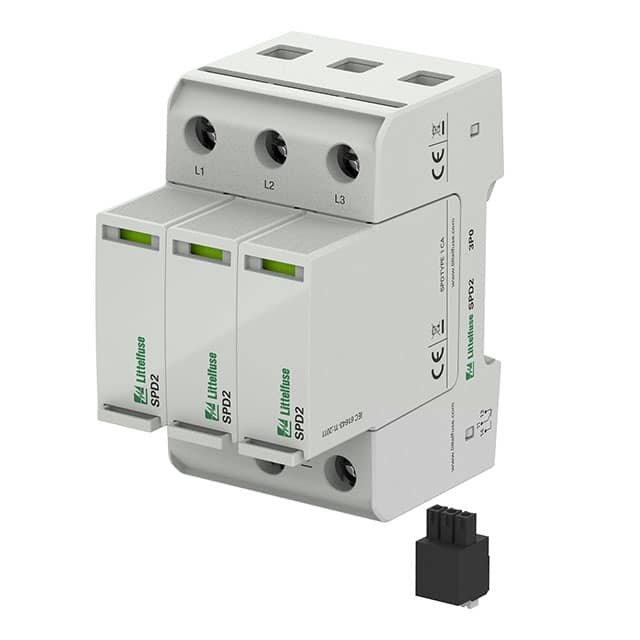SPD2 PV Series, Surge Protection Devices (SPDs)
Results:
6
Manufacturer
Series
Voltage - Continuous Operating (Max) (MCOV)
Voltage - Protection Level (VP) (2416)
Voltage - Protection Rating (VPR)
Form
Approval Agency
Current - Discharge (Max) (8/20µS)
Current - Short Circuit Rating (SCRR)
Features
Number of Poles
Operating Temperature
Mounting Type
Current - Discharge (Nom) (8/20µS)
Type
Results remaining:6
Applied Filters:
SPD2 PV
About Surge Protection Devices (SPDs)
Surge Protection Devices (SPDs) are both designed to protect electronic systems from voltage surges or transients, but they serve different purposes and operate in distinct ways. TVS diodes are semiconductor devices that are specifically designed to suppress transient voltage spikes by limiting or clamping the voltage at a specific level. They provide protection by diverting excess current away from sensitive components and can respond quickly to voltage spikes. TVS diodes are typically used at the circuit level to protect individual components or small groups of components within electronic devices. On the other hand, Surge Protection Devices (SPDs) are designed to protect entire electrical and electronic systems from temporary power surges or transients on AC or DC power lines. These surges can result from lightning strikes, switching operations, or other electrical disturbances. SPDs are installed at the point of entry of power lines into a building or within individual electrical circuits to safeguard connected equipment from potential damage caused by overvoltage. While TVS diodes are focused on protecting specific components from transient events, SPDs are geared towards safeguarding entire systems from power surges. SPDs utilize a combination of protective components such as metal oxide varistors (MOVs), gas discharge tubes (GDTs), or silicon avalanche diodes (SADs) to absorb and dissipate excessive energy generated during a surge event. In summary, TVS diodes and SPDs both play crucial roles in protecting electronic systems from voltage surges, but they operate at different levels of the system. TVS diodes are used to protect individual components within electronic circuits, while SPDs are employed to safeguard entire electrical and electronic systems from power surges on AC or DC power lines.


